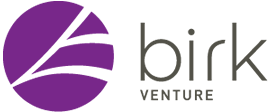Content
Due to the hard deadline and the design team’s need to work with other teams like development, sales, product, and marketing, Scrum could be a perfect fit for managing this project. WIP limits set a limit on the number of tasks that can be in any one lane at a time. When a team’s WIP limit is reached, it serves as a signal that there’s a blocker for that team. Another key feature of Kanban is Work-In-Progress limits. Let’s say, for example, that your backend development team is working at a much faster rate than your frontend development team.

This lets the former receive feedback for upcoming sprints and other things related to the backlog. Scrum and Kanban are popular tools used for agile process development. Both of these methods emphasize improving the process by increasing efficiency. The agile community believes this conversation shouldn’t be about the tools. We often see the tool of choice driving the framework of choice and the framework driving the principles the team adopts. We believe the decision should flow in the other direction.
Agile vs. Waterfall vs. Kanban vs. Scrum
A Kanban board can start with a “Product Backlog” lane where all of your incomplete User Stories live. And while Scrum-specific tools work well if you think your team will only ever use Scrum, they’re less effective—and far more cumbersome—if you want to take the leaner Kanban approach. The “right” choice for your team depends on your organizational structure, team preferences, and the specifics of your work and project.
As a number of aspects are involved in Scrum boards, they are a little complex. You will require investing some effort in the planning phase of the scrum boards. Moreover, tracking the issues and completing the sprints can be a little challenging. The Kanban board is quite different from the Scrum board.
Groom the Board
When using Scrum, a backlog consists of specialized tasks and is owned by a single team. The Scrum methodology is most suitable for goal-driven projects with fixed deliverables and a limited timeframe. Kanban is better suited to long-term projects requiring multiple changes while retaining a stable priority. It can have multiple teams in the organization sharing a central Kanban board, which may remain in place for several weeks or even months. The execution of ideas in Scrum and Kanban are pretty different. In the Scrum methodology, tasks are broken up into sprints.

Agile software development requires a high level of collaboration between self-organizing, cross-functional teams and a high aptitude for adapting to change. You also gain access to Trello templates, which make it much easier to create new boards that align with your project. It’s no wonder Trello made it into our best free project management software article. The scrum philosophy was born around 1986 and referenced by professors Hirotaka Takeuchi and Ikujiro Nonaka. Jeff Sutherland put the theory into practice in 1993, initially using it for software development, although today scrum methodology is used in a wide variety of industries.
Tips on using agile Kanban boards
The waterfall model divides each project into different phases and moves through the phases in sequential order. No phase can begin until the phase before it is completed. Typically, each phase ends in a project milestone that indicates the next phase can begin. No, it is not possible to change a Jira project from Kanban to Scrum.
Some teams simply prefer to have more structure in their process, whether they need it or not. Do they feel better and perform better with more structure or less? Sometimes it’s difficult to look at your own knowledge and performance objectively. Although they can be very helpful, outside help does not have to mean consultants or coaches.
Pros and Cons to Kanban vs. Scrum
After sprint planning, the scrum team jumps into execution, design, and implementation. There is a need to collaborate and unblock each other during the sprint. The scrum team meets daily along with the scrum master and product owner at a designated time for about 15 minutes. In sum, scrum is an agile framework that helps you finish the project work in an iterative and incremental improvisation manner.
- We have already connected the BigPicture with Trello and Jira instances in the same hosting model as the parent instance.
- That is the reason why Kanban is so applicable to repeatable processes like manufacturing.
- Learn what the waterfall project management methodology can (and can’t) do for you.
- Companies that follow predictable development cycles tend to do well with scrum’s one- or two-week sprints.
- For instance, a Scrum team might make use of Kanban boards.
- Scrum was first introduced in Japan by two college professors who argued the old, sequential approach to developing products would no longer get the job done.
- Selecting between these two methods is mainly based on your team’s requirements.
And you don’t even necessarily have to always adhere to one or the other methodology. In fact, teams that have been working together for a while can easily switch back and forth between the two methodologies to accommodate different types of projects and sets of work. Our https://globalcloudteam.com/ next goal is to improve the performance and usability of key functionalities, such as scheduling and planning within modules. We want to make BigPicture even more transparent and user-friendly by enhancing sorting, filtering, grouping, and searching functionalities.
How does Kanban contrasts with Scrum?
This visual planning helps teams collectively prioritize tasks, minimize cycle time, and ship work earlier and more often. Scrum metricsare data points scrum teams can use to improve efficiency and effectiveness. They what is scrumban can inform decision-making and help teams become more efficient in planning and execution. During the sprint planning phase, teams can use metrics such as sprint goals, team velocity, team capacity, and type of work.


Leave a Reply